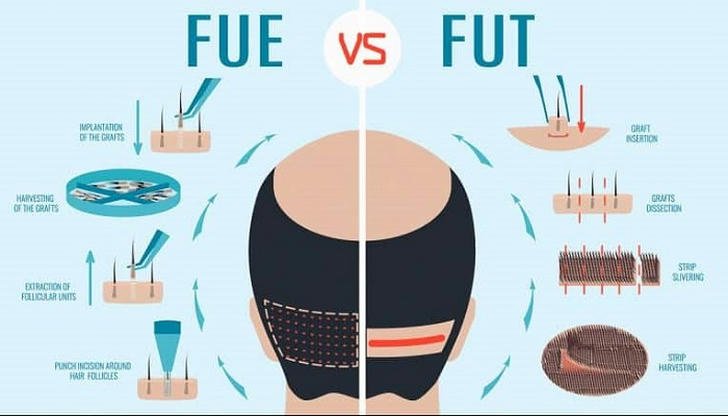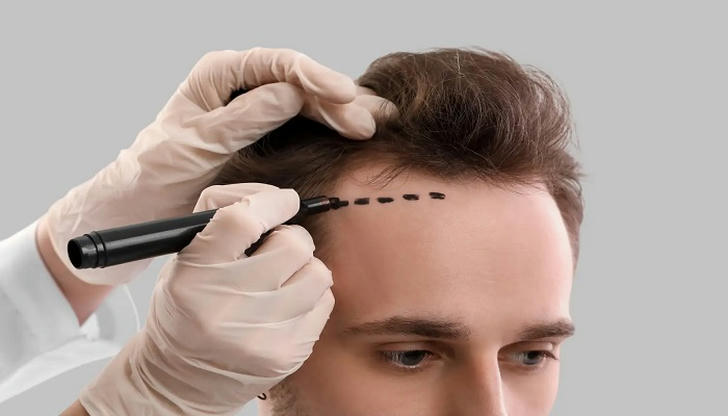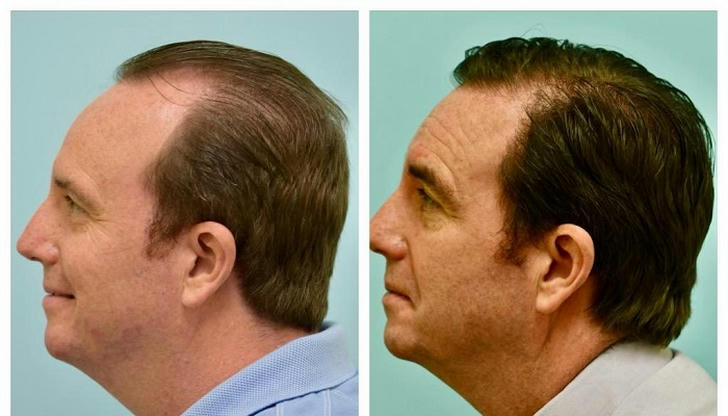Understanding Hair Transplantation about Techniques, Benefits, and What to Expect
Hair loss is a common issue that affects millions of people, both men and women, around the world. While it can be a natural part of aging, it can also be caused by various factors such as genetics, hormonal changes, stress, and illness. For many, hair loss can lead to a significant decrease in self-esteem and confidence.
Fortunately, hair transplantation has emerged as a popular and effective solution for those who want to restore their hair and regain their confidence. This article provides an in-depth look at hair transplantation, including techniques, benefits, and what to expect during the process.
1. What Is Hair Transplantation?
Hair transplantation is a surgical procedure that involves moving hair follicles from one part of the body (usually the back or sides of the scalp) to areas where hair is thinning or has stopped growing. The goal of the procedure is to restore natural-looking hair growth in the areas affected by hair loss.
There are two main types of hair transplant techniques:
- Follicular Unit Transplantation (FUT)
- Follicular Unit Extraction (FUE)
Both methods aim to achieve natural-looking results by carefully selecting and transplanting hair follicles to the affected areas.

2. Types of Hair Transplantation Techniques
a. Follicular Unit Transplantation (FUT)
FUT is the traditional method of hair transplantation. In this procedure, a strip of scalp skin containing hair follicles is removed from the back or sides of the head. The strip is then dissected into individual follicular units, which are transplanted into the thinning or balding areas.
Procedure:
- The donor area is numbed with a local anesthetic, and a strip of scalp is removed.
- The hair follicles are separated and prepared for transplantation.
- The recipient area is numbed, and the follicles are carefully implanted into the scalp.
Advantages:
- FUT can provide a larger number of grafts in a single session, making it ideal for patients with more extensive hair loss.
- It is often more cost-effective compared to FUE.
Disadvantages:
- FUT requires a larger incision, which may leave a linear scar at the donor site.
- Recovery time may be longer compared to FUE.
b. Follicular Unit Extraction (FUE)
FUE is a more modern and less invasive technique for hair transplantation. Rather than removing a strip of scalp, individual hair follicles are extracted from the donor area and transplanted into the thinning or bald areas.
Procedure:
- A small, punch-like instrument is used to remove individual hair follicles from the donor area.
- The follicles are then prepared and transplanted into tiny incisions made in the recipient area.
Advantages:
- FUE leaves no linear scar, only tiny, circular scars that are often less noticeable.
- The recovery time is typically faster than FUT.
- FUE is ideal for patients who prefer a less invasive procedure.
Disadvantages:
- The number of grafts that can be transplanted in a single session may be lower than with FUT.
- FUE can be more expensive than FUT due to the time-intensive process.
c. Robotic Hair Transplantation
Robotic hair transplantation is a newer advancement in the field that utilizes robotic systems to assist with FUE. The robot assists the surgeon in extracting hair follicles with precision and speed, improving the accuracy and consistency of the procedure.
Advantages:
- Increased precision and efficiency during follicle extraction.
- Reduced human error.
Disadvantages:
- Robotic systems may not be available at all clinics and can be more expensive than manual FUE.

3. Benefits of Hair Transplantation
Hair transplantation offers numerous benefits, making it a popular choice for those struggling with hair loss:
a. Natural-Looking Results
The main benefit of hair transplantation is that it offers permanent and natural-looking results. Since the hair follicles are taken from your own scalp, the transplanted hair grows just like your natural hair. This results in a more authentic and seamless appearance compared to other treatments like wigs or hairpieces.
b. Boost in Self-Confidence
Hair loss can lead to a significant drop in self-esteem. A successful hair transplant can restore your appearance, allowing you to feel more confident and comfortable in social and professional situations.
c. Permanent Solution
Unlike topical treatments or medications, which require ongoing use, hair transplantation provides a permanent solution. Once the transplanted hair follicles establish themselves in the recipient area, they continue to grow for a lifetime.
d. Low Maintenance
After the initial recovery period, transplanted hair requires little maintenance. It can be treated just like natural hair, with no special shampoos or medications needed.

4. What to Expect Before, During, and After the Procedure
a. Before the Procedure
Before undergoing a hair transplant, you will have a consultation with a qualified surgeon who will assess your hair loss and determine if you’re a good candidate for the procedure. The surgeon will review your medical history, discuss your expectations, and explain the procedure in detail.
You may be asked to avoid certain medications, such as blood thinners, prior to the procedure. Additionally, you will need to arrange for someone to drive you home after the surgery.
b. During the Procedure
The procedure is typically performed under local anesthesia, so you won’t feel any pain during the surgery. You may experience some mild discomfort or pressure, but it should not be painful. The length of the procedure varies depending on the number of grafts being transplanted but typically lasts 4 to 8 hours.
c. After the Procedure
After the procedure, you may experience some swelling, redness, and scabbing in the transplant area. These symptoms are temporary and usually subside within a few days. You will receive detailed aftercare instructions to help promote healing and minimize complications.
- Recovery time: Most patients can return to work within a few days, though it may take a few weeks for the transplanted area to fully heal.
- Results timeline: It can take several months for the transplanted hair to begin growing, with full results visible after 9 to 12 months.
5. Risks and Considerations
Like any surgery, hair transplantation comes with potential risks and complications. While hair transplants are generally safe, some of the possible side effects include:
- Infection
- Scarring
- Unnatural-looking results if not performed by an experienced surgeon
- Shock loss, where existing hair may temporarily fall out after the procedure before regrowing.
It is crucial to choose a qualified, experienced surgeon to minimize these risks and ensure the best possible outcome.

6. Is Hair Transplantation Right for You?
Hair transplantation is suitable for most people who are experiencing hair loss, but it’s essential to have realistic expectations. It’s best suited for those with stable hair loss, meaning that the hair loss has slowed or stopped. If you're still in the early stages of hair loss, your doctor may recommend waiting until your condition stabilizes before pursuing a transplant.
Your surgeon will help determine if you're a good candidate based on factors such as hair type, the extent of hair loss, and your goals for the procedure.
Conclusion
Hair transplantation has become a highly effective and reliable solution for those experiencing hair loss. With the latest advancements in FUT, FUE, and robotic hair transplantation, individuals can restore their hair and confidence in a way that looks and feels natural.
If you are considering a hair transplant, it’s important to work with a skilled and experienced surgeon who can guide you through the process and help you achieve the best possible results. While the procedure may require some recovery time, the long-term benefits of a full, natural-looking head of hair can be well worth the effort.
